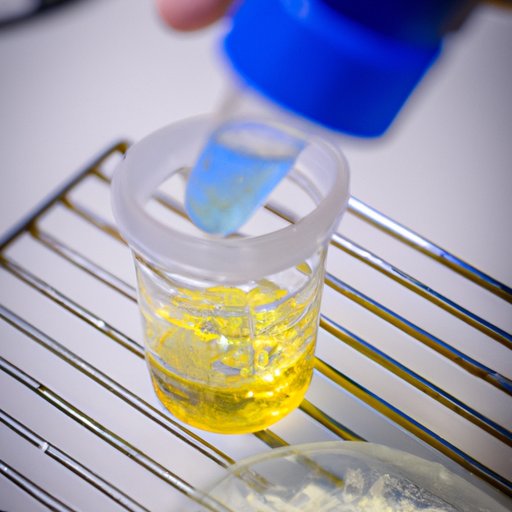
I. Introduction
Dissolving refers to the process by which a solute (for example, a solid) dissolves in a solvent (such as a liquid) to create a homogeneous solution. Understanding dissolving as a physical change is important because it affects many aspects of everyday life, including cooking, cleaning, and even medical treatments.
II. Scientifically Explained: Why Dissolving is a Physical Change
Before discussing dissolving, it is important to understand the difference between physical and chemical changes. Physical changes involve a change in the form of matter, without changing the chemical composition of a substance. Chemical changes, on the other hand, involve the creation of one or more new substances through a chemical reaction.
Dissolving is a physical change because it only involves a change in the state, or form, of a substance, without changing its chemical composition. Examples of dissolving in everyday life include sugar dissolving in coffee or salt dissolving in water.
III. Mixing it Up: Understanding Physical Changes in Chemistry
Physical changes in chemistry involve changes in the state or form of matter, without any alteration in composition. Common physical changes include boiling, melting, and freezing. It is essential to distinguish between physical and chemical changes in chemistry, since these changes have vastly different effects on matter.

IV. The Mystery of Dissolving Unveiled: A Physical Change in Action
The process of dissolving involves the solute particles breaking up into smaller, individual particles that become surrounded by the solvent particles. Factors that affect dissolving include temperature, agitation, and concentration. Dissolving is important in many industrial processes, such as pharmaceutical production and fertilizer production.
A case study of dissolving in action is the use of chemotherapy to treat cancer. Chemotherapy drugs are dissolved in a saline solution that is then directly administered to the patient through an intravenous (IV) infusion. This delivery method allows for the drugs to more rapidly enter the bloodstream, providing quicker relief and a faster response to the cancer.
V. Breaking Down Barriers: What Happens During a Physical Change
During physical changes, there is usually a transfer of energy between different states of matter. When solids are heated, for instance, they can turn into liquids or gases. Physical changes can also impact the properties of matter, such as its solubility, density, and boiling point.
VI. Transforming Matter: Dissolving as a Physical Change
Dissolving is an example of the transformation of matter from a solid state to a liquid state. When a solid solute dissolves in a liquid solvent, the properties of both the solute and solvent are changed. The solute particles are now dispersed evenly throughout the solvent, leading to a homogenous solution.
The impact of dissolving on the environment can be significant. For example, the use of fertilizers, which are often dissolved in water, can cause water pollution and environmental harm
VII. From Solids to Liquids: Delving into Dissolving’s Physical Properties
The properties of solids differ from liquids. Solids have a fixed shape, volume, and density, while liquids have a flexible shape, variable volume, and a density that is less than that of a solid. Dissolving can affect the properties of both solutes and solvents. For example, when salt is dissolved in water, the solution becomes denser than either the original solute or solvent alone.
VIII. Diving Deeper into the Physics of Dissolving: When Solid Meets Liquid
Several factors affect the rate of dissolving, including temperature, pressure, and surface area. In general, as the temperature increases, the rate of dissolving increases, since the kinetic energy of the molecules increases. Additionally, the impact of dissolving on chemical reactions can be significant, since many chemical reactions require the reactants to be in solution with each other.
IX. Conclusion
In conclusion, dissolving is a physical change that has significant impacts on our everyday lives, from medical treatments to industrial processes. Understanding dissolving as a physical change allows us to better comprehend the many ways in which matter can be transformed. It is essential for all those interested in chemistry to have a comprehensive understanding of physical and chemical changes and their effects on matter.




